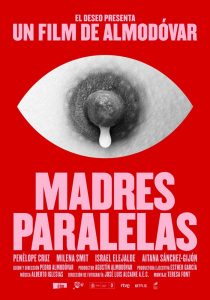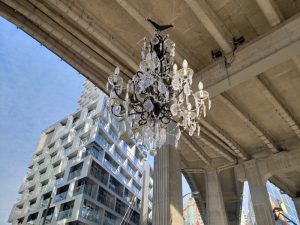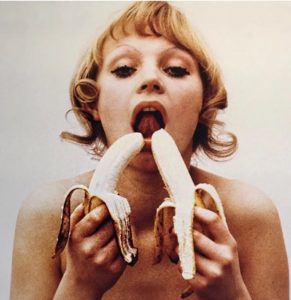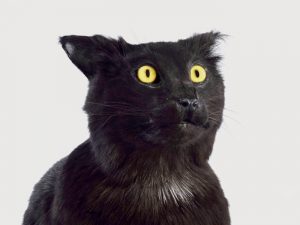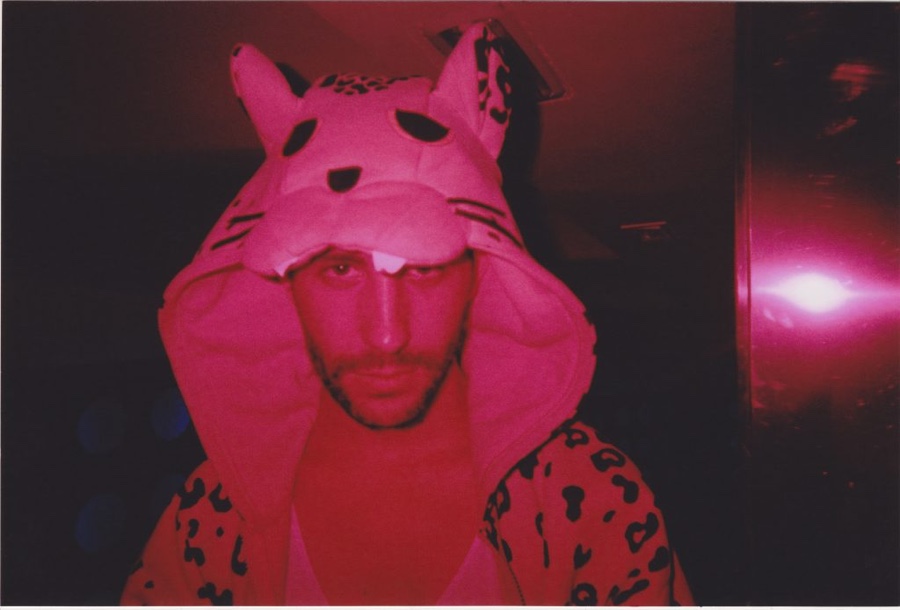
Alejandría Cinque, from the The Disposable Generation series
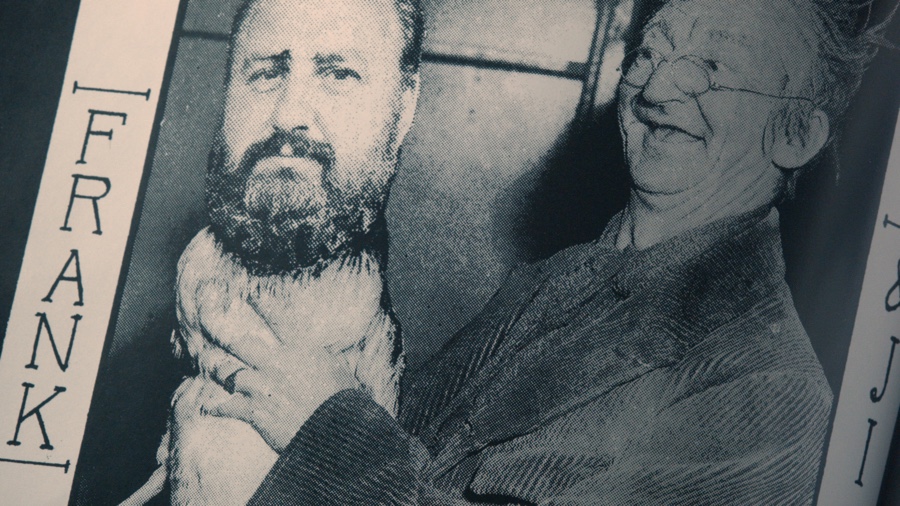
Clara Casian, House on the Borderland, 2017
La Movida was a countercultural movement that emerged in Madrid after the death of dictator Francisco Franco in 1975. Suddenly liberated from the stern restrictions imposed the State and the Church, musicians, film directors (notably Pedro Almodóvar), artists and anyone involved in the capital alternative nightlife collectively shaped one of Spain’s most exuberant movements it’s ever seen. A movement characterized by new forms of expression, clubbing, recreational drugs and more visibility for the LGBT communities.
La Movida is also the name of the exhibition that opened at HOME in Manchester a few weeks ago. The show goes beyond the La Movida Madrileña of the 1980s to explore the traces and echos the movement has left in contemporary cultural life in Spain, in England and by extension in the rest of Europe.
First, the trailer:
Trailer for the exhibition La Movida at HOME in Manchester
Anyone else wondering what the music in the trailer is? It’s Extraños Juegos by Los Zombies. I’m listening to it in loop this week!
Los Zombies, Extraños Juegos, 1980
But back to business…
The exhibition at HOME shows that the Movida Madrileña might be almost 40 years old but much of what made it so explosive and scandalous at the time is still provoking ire and horror today. This is why, in this age of Brexit and shortsighted nationalism, of austerity and politicians pinning for the crucifixion of abortion, same-sex marriage and freedom of movement, an exhibition that breathes hedonism and transgression is not just engaging, it is also necessary. It compels us to reflect on the fights we fought, won and lost again. On the values and rights we should never take for granted.
A short and very subjective tour of some of the artworks:
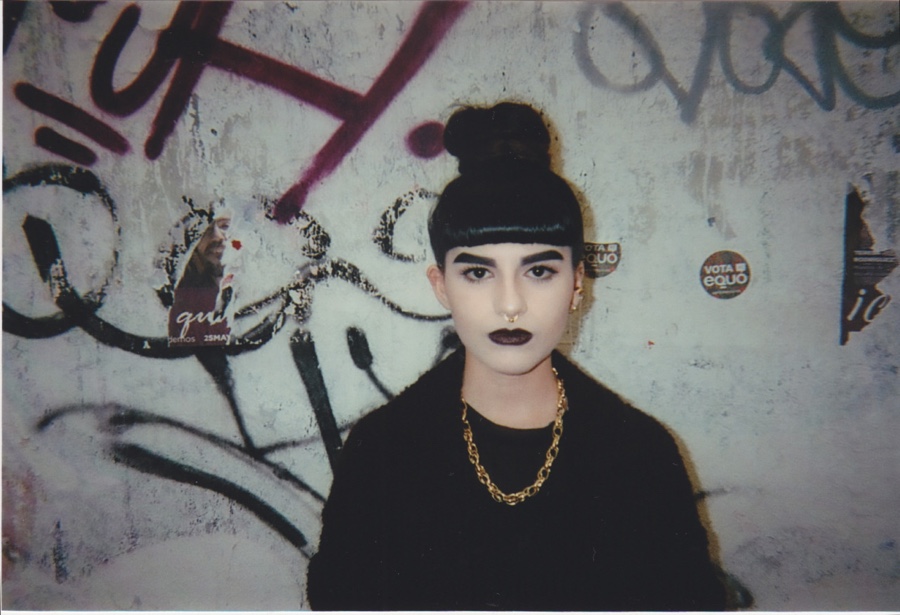
Alejandría Cinque, from the The Disposable Generation series
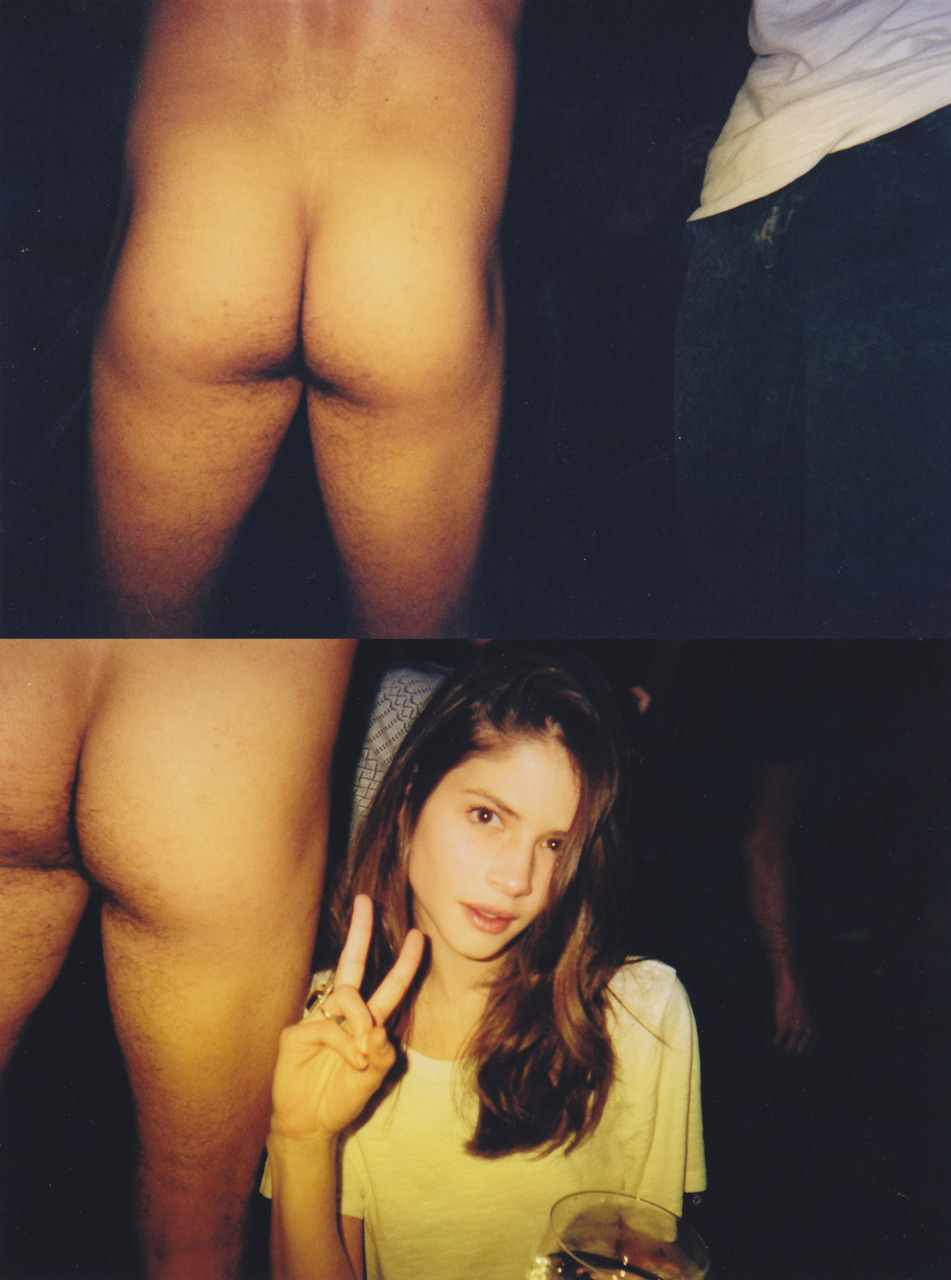
Alejandría Cinque, from the The Disposable Generation series
Alejandría Cinque is a young artist who uses disposable cameras to portray the ‘disposable generation,’ the young people who live in Madrid, a city driven by capitalism but they have no money, so feeling angry and abandoned, they seek a temporary escape in drink, drugs and dance. Cinque sees the camera as a tool that enables her meet people. Most of them ended up becoming friends or lovers, she explained in an interview with i-D.
She started sharing her photos of Madrid’s counter-cultural nightlife on tumblr but she now also collects and publish the images in a fanzine called WE ARE.
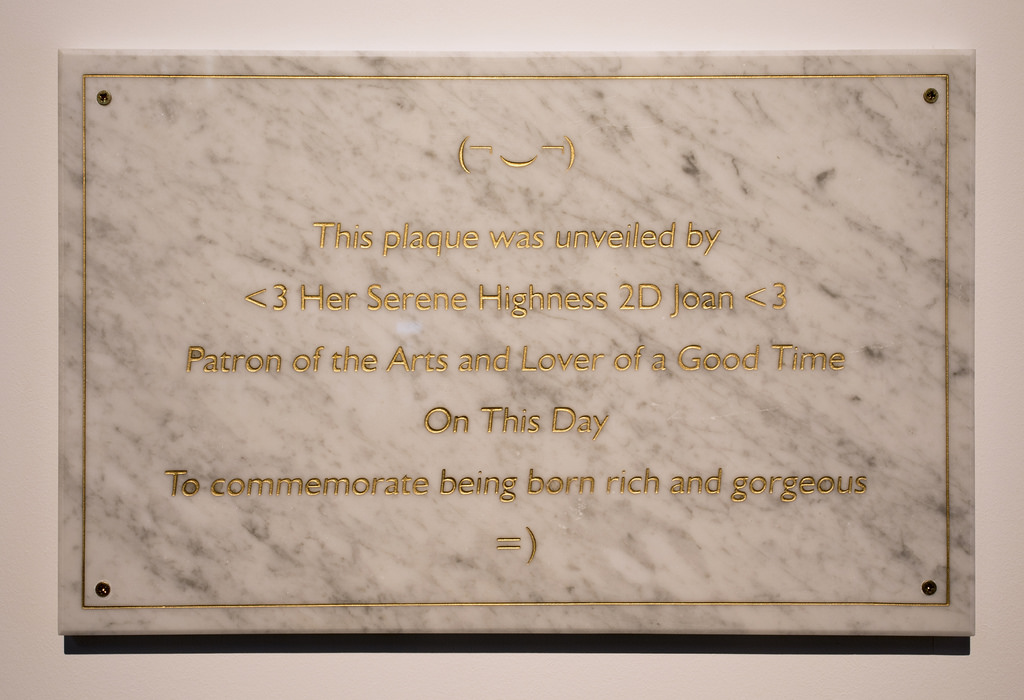
La JohnJoseph, 182cm Queenie, 2017 (La Movida installation shot). Photo credit Lee Baxter for HOME
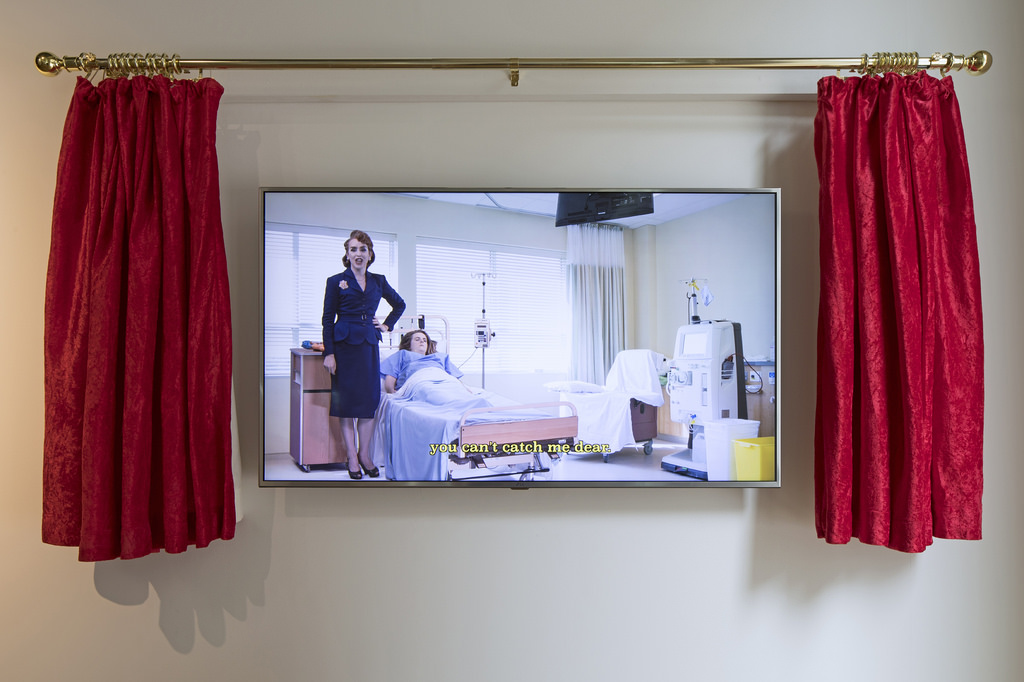
La JohnJoseph, 182cm Queenie, 2017 (La Movida installation shot). Photo credit Lee Baxter for HOME
La JohnJoseph, 182cm Queenie (excerpt), 2017
In 182cm Queenie, novelist and performer La JohnJoseph is King Juan-Carlos I of Spain announcing the transition from dictatorship to democracy. Only in his version the Spanish king is cast as a working-class woman called 2D Joan. Because La JohnJoseph is interested in exploring the convergence of social class, gender identity, and religious faith in the matrices of social power, the discrepancies do not end there.
First of all, 2D Joan speaks with a thick Scouse accent, a provocative reference to Basque and Catalan nationalism (Liverpool being often see as a fierce europhile city lost in a sea of Brexiters.) 2D Joan’s portrayal of democracy is also far more nuanced and iconoclastic than the one we would expect from someone belonging to the royal family. Hers come with holiday resorts, promises of a sensual integration into the European Economic Community but also with sharp comments about the machinations of political power, and those who wield it. Despite the outrageous make-up and biting appraisal of power and monarchy, the balance between critique, humour and analysis of reality is so spot on, i doubt anyone could genuinely feel offended by the video (plus, there’s the Liverpool accent which i’ve always found so charming.)
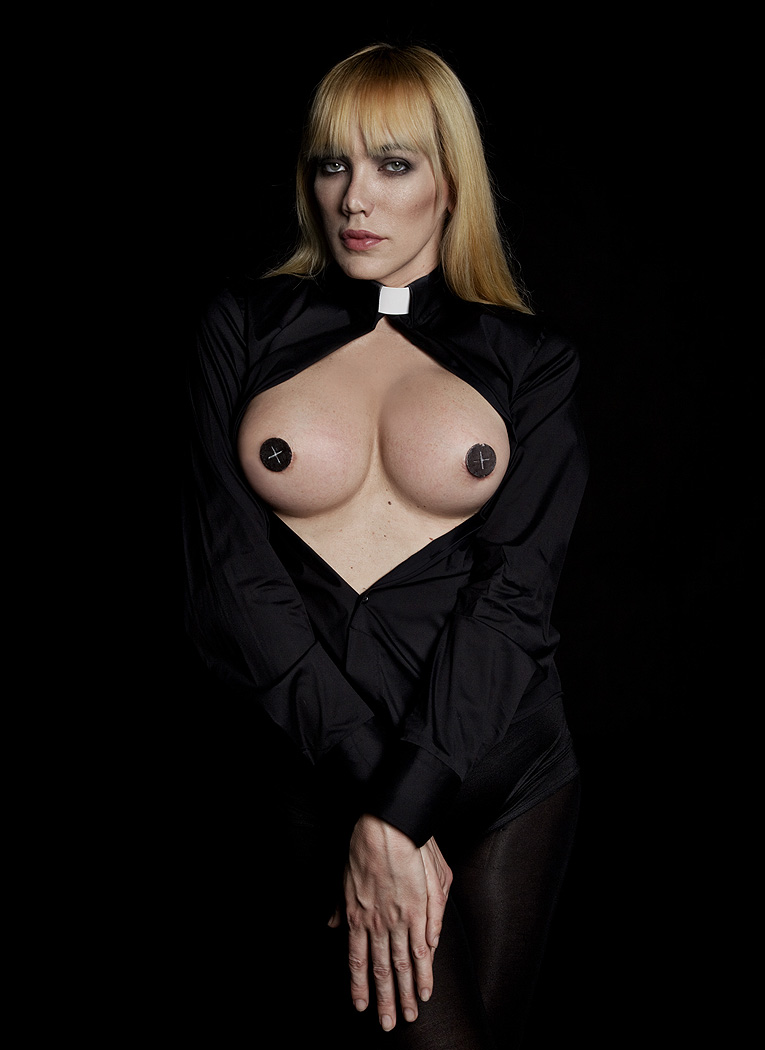
Bruce LaBruce, from the series Obscenity
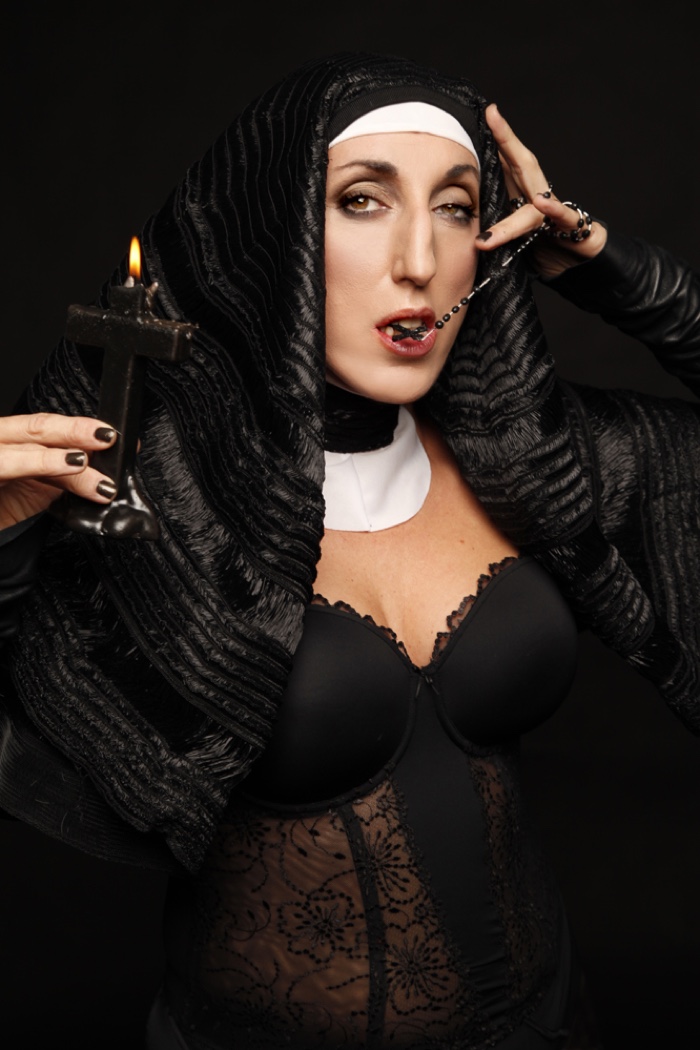
Bruce LaBruce, from the series Obscenity
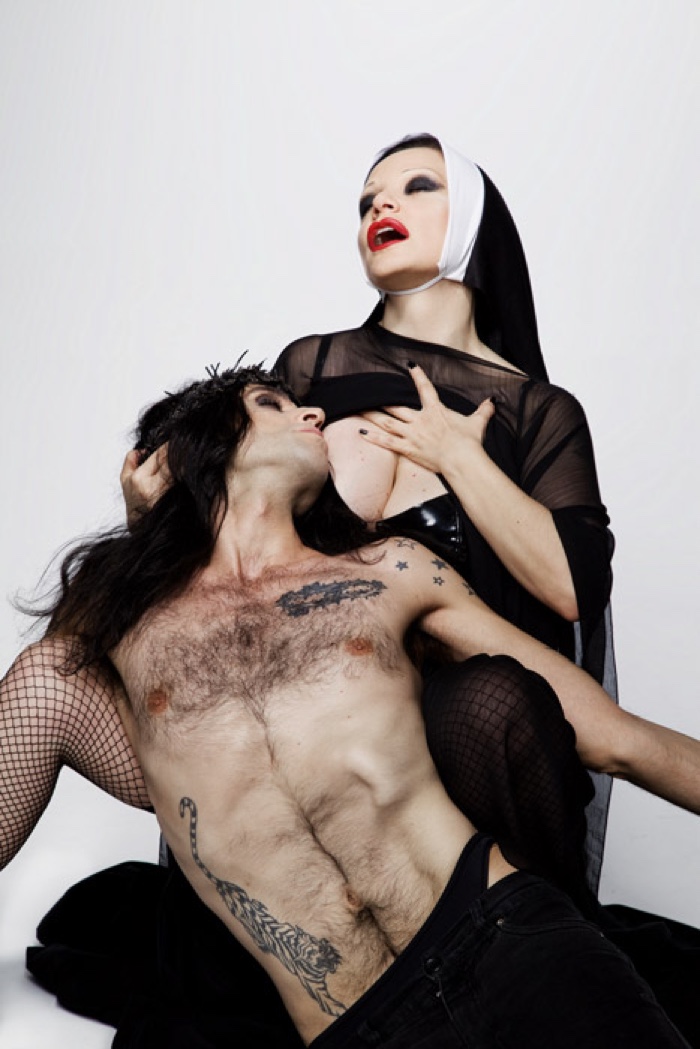
Bruce LaBruce, from the series Obscenity
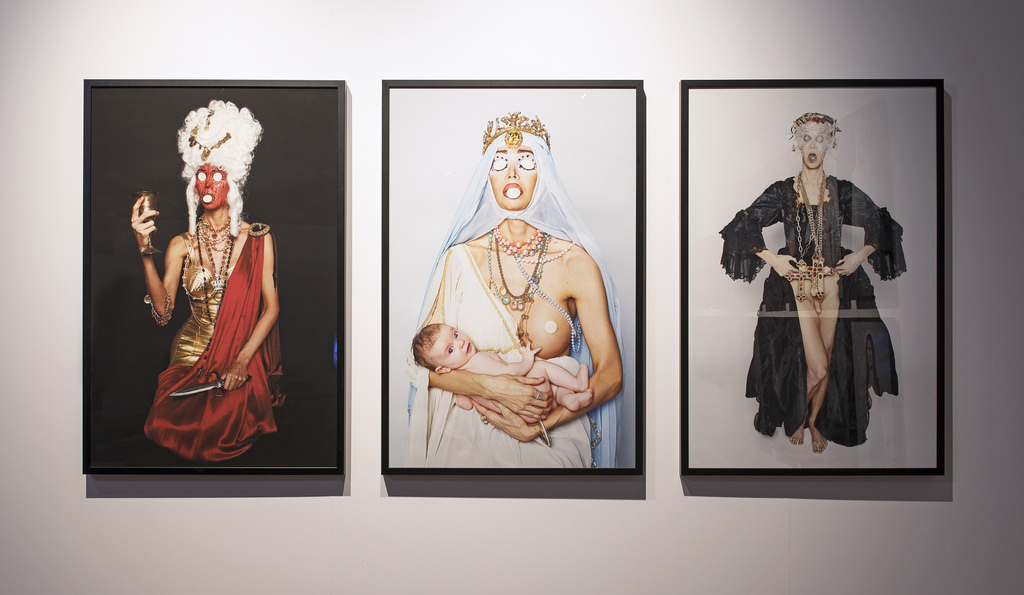
Bruce LaBruce, Obscenity, 2012 (La Movida installation shot). Photo credit Lee Baxter for HOME
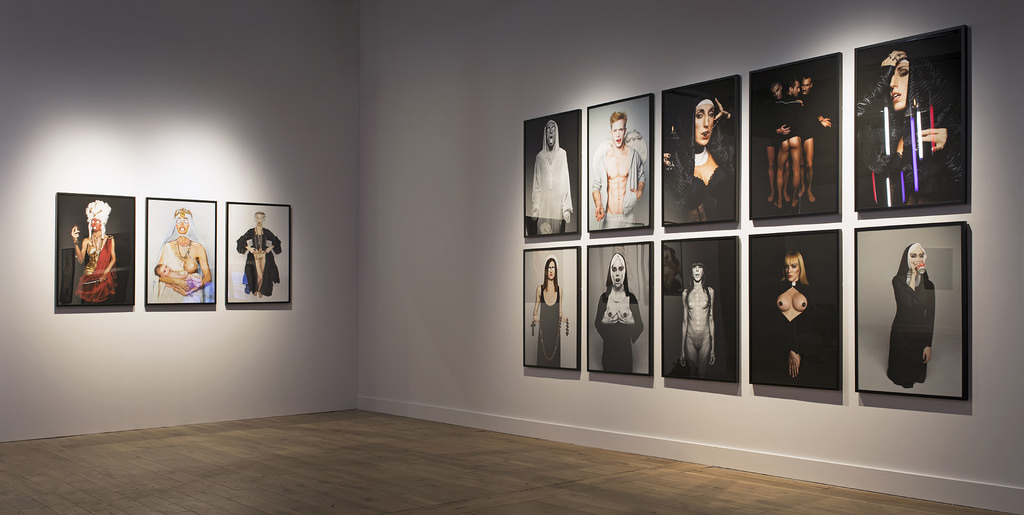
Bruce LaBruce, Obscenity, 2012 (La Movida installation shot). Photo credit Lee Baxter
On the other hand, it’s difficult to predict how people might react to artworks.
Take Bruce LaBruce‘s Obscenity portraits, for example. The prints depict Spanish cultural figures dressed as saints, nuns and angels and appearing to perform all kinds of fetishes and erotic fantasies. You might think that fashion magazines ads from the 1990s and 2000s have made us immune to glossy titillation. Or that Madonna had exhausted public indignation over the use of catholic figures in (mild) erotic context. But it turns out that visitors of the HOME exhibition were upset with this close encounter between sex and religions. Some of them even sent hand-written letters to complain about the images.
Their reactions however was nowhere near as ferocious as the ones observed in Madrid where the mayor called for an exhibition of the photo series to be closed, religious groups protested outside the gallery and someone hurled a firebomb through the window.
In an interview that followed the failed attempt to destroy the show in the Spanish capital, LaBruce shared this amusing anecdote about how he got hold of hostias: That’s a good story, actually. We first bought a bag of them in the religious supplies shop where we got all the other props for the shoots. Then during the second shoot we ran out and sent one of the flamboyant gay stylists to get some more. They wouldn’t sell them to him. In the end we got one of the girl assistants to go with a shawl on her head.
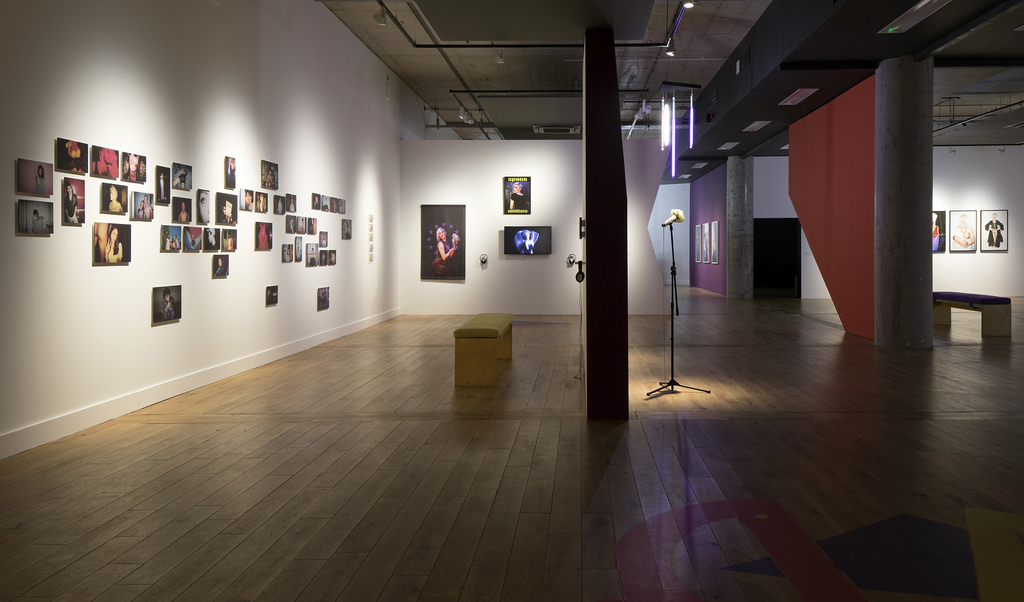
La Movida installation shot. Photo credit Lee Baxter for HOME
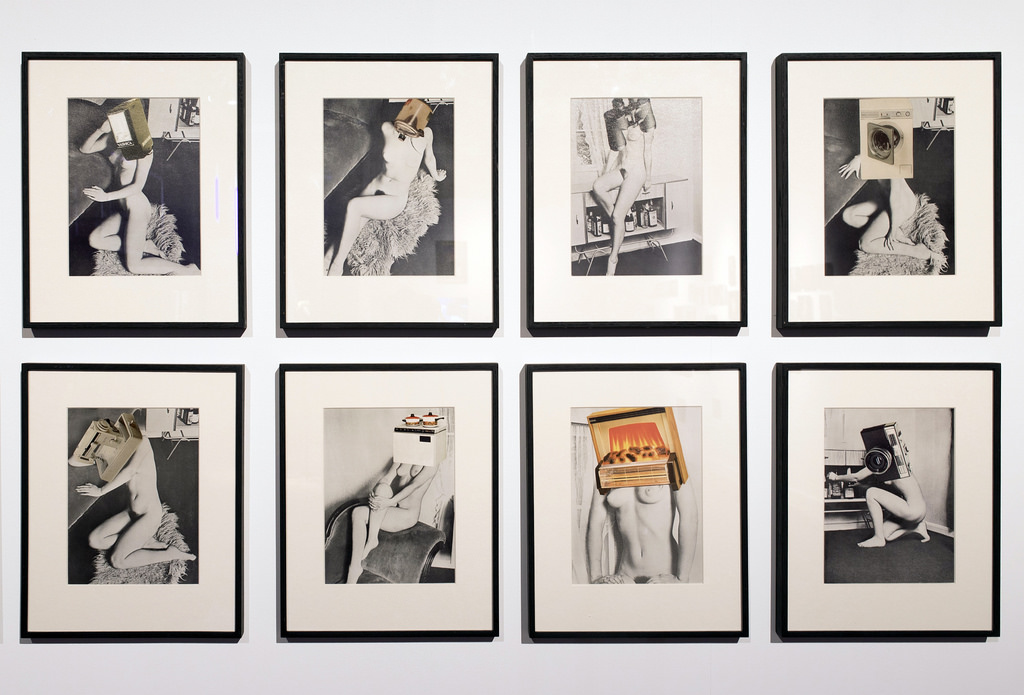
Linder, Pretty Girls, 1977-2007 (La Movida installation shot). Photo credit Lee Baxter for HOME
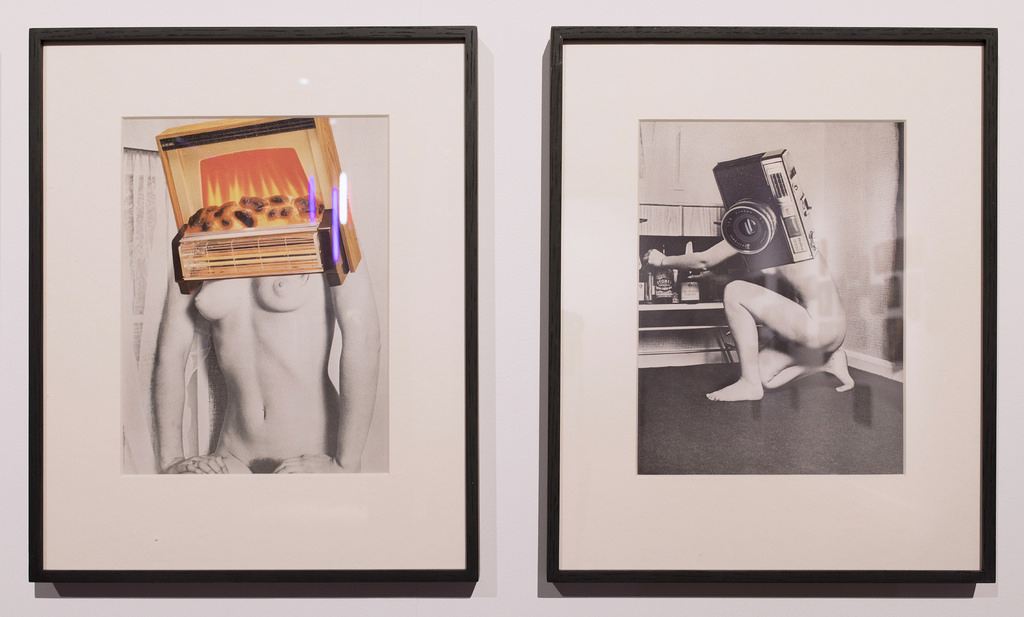
Linder, Pretty Girls, 1977-2007 (La Movida installation shot). Photo credit Lee Baxterv for HOME
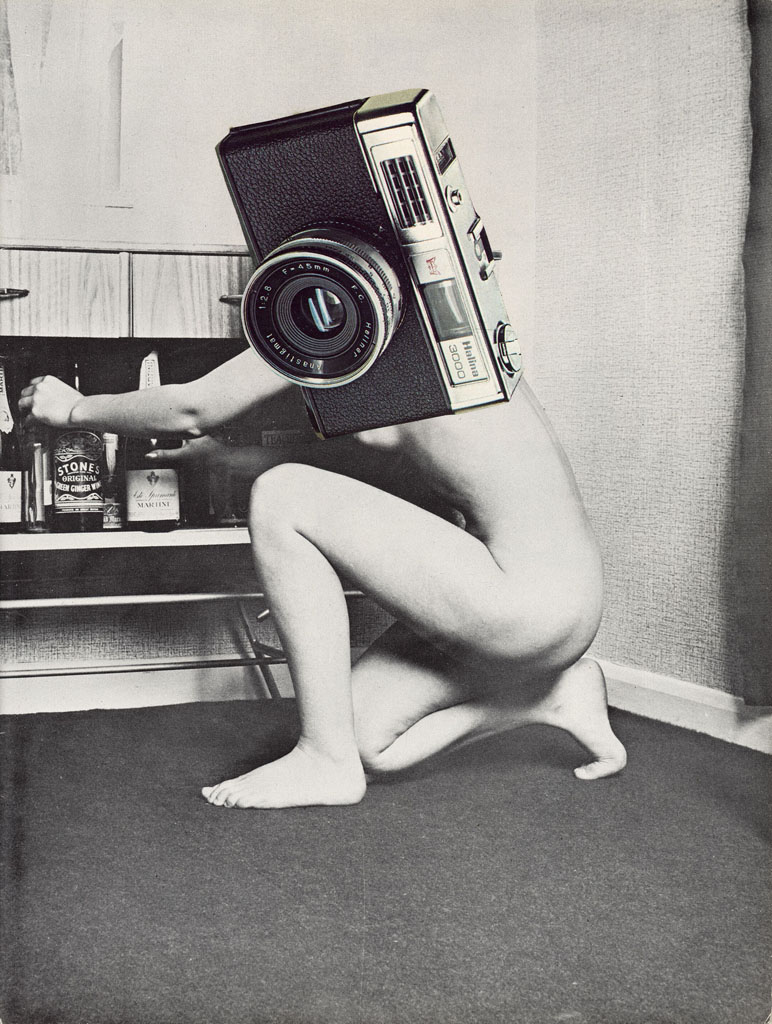
Linder, from the Pretty Girls series, 1977-2007
A figure in the Manchester punk and post-punk music scenes of the late 1970s and early 1980s, Linder made posters and fliers for rock bands. Her Pretty Girls collages feature naked women found in erotic magazines with kitchen appliances in lieu of head. The series denounced how domestic technologies, instead of aiding the liberation of women, contributed to their enslavement and objectification.
It might seem like pretty standard imagery nowadays but at the time the Pretty Girls caused outrage and was rejected by Manchester’s left-wing bookshops as too extreme.
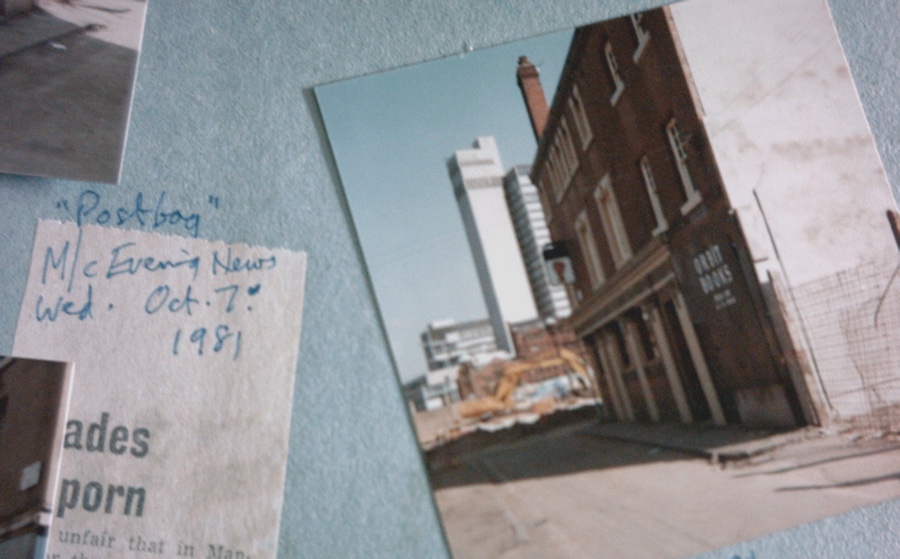
Clara Casian, House on the Borderland, 2017
Speaking of bookshops, censorship and indignation….
Clara Casian’s film House on the Borderland explores alternative publishing and censorship in Manchester via the history of Savoy Books. Heavily persecuted in the 1970s and 80s for their alternative publications, Savoy’s office and bookshops were raided by the Manchester Obscene Publications Squad more than sixty times. The attempts to restrict the activities of Savoy was part of a moral crusade orchestrated by conservative police commissioner James Anderton, nicknamed ‘God’s Cop’ because of his belief that God was guiding his defense of moral issues.
These attempts to ban boundary-pushing literature echo the fate of HOME’s Dark Habits, a publication that accompanies the exhibition La Movida. Sarah Perks and Bren O’Callaghan, curators at HOME, invited 19 contributors to explore freedom and indulgence, hedonism, transgression, sex and moral conventions for the book. They sent the texts to their usual printer who declared that the content of the book was too offensive to be printed. HOME had to find a more open-minded printer. The book was released a few days ago. I’m waiting for my copy to arrive in Turin and i’m obviously very curious about what i’m going to find inside the book.
And i’ll leave you with 3 more images. One is a touching portrait of Saint Batman, a queered, broken Batman, a folk saint of a lesser pantheon. The other two were taken while i was walking through Manchester, one of the most relentlessly exciting and energetic cities in the whole universe:
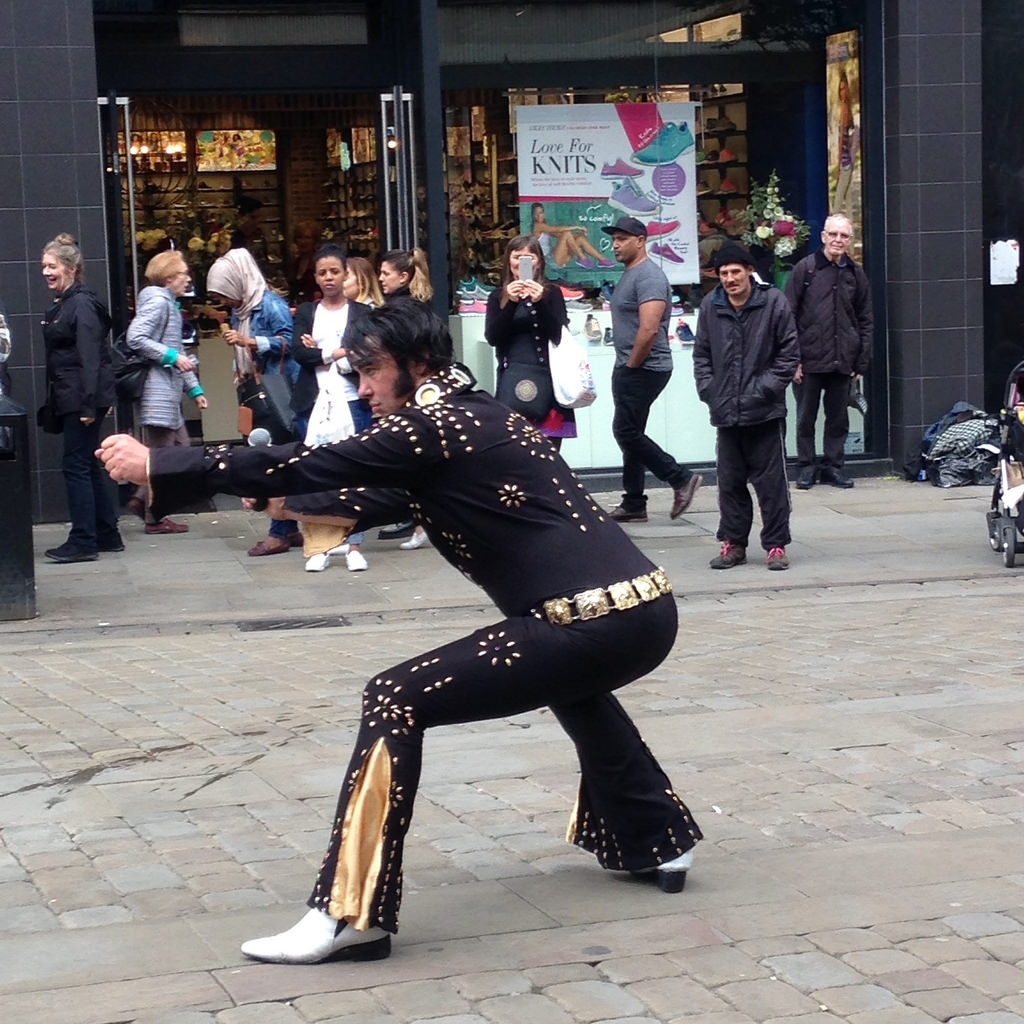
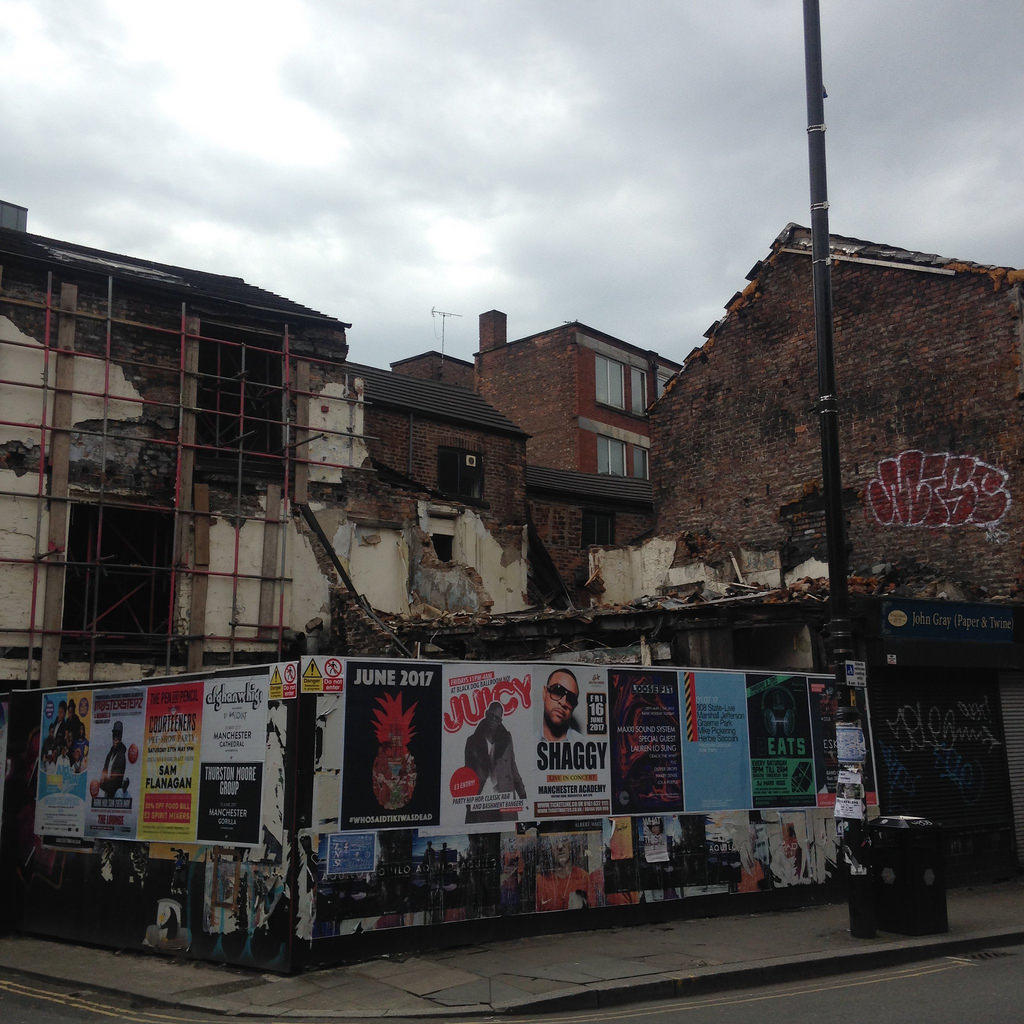
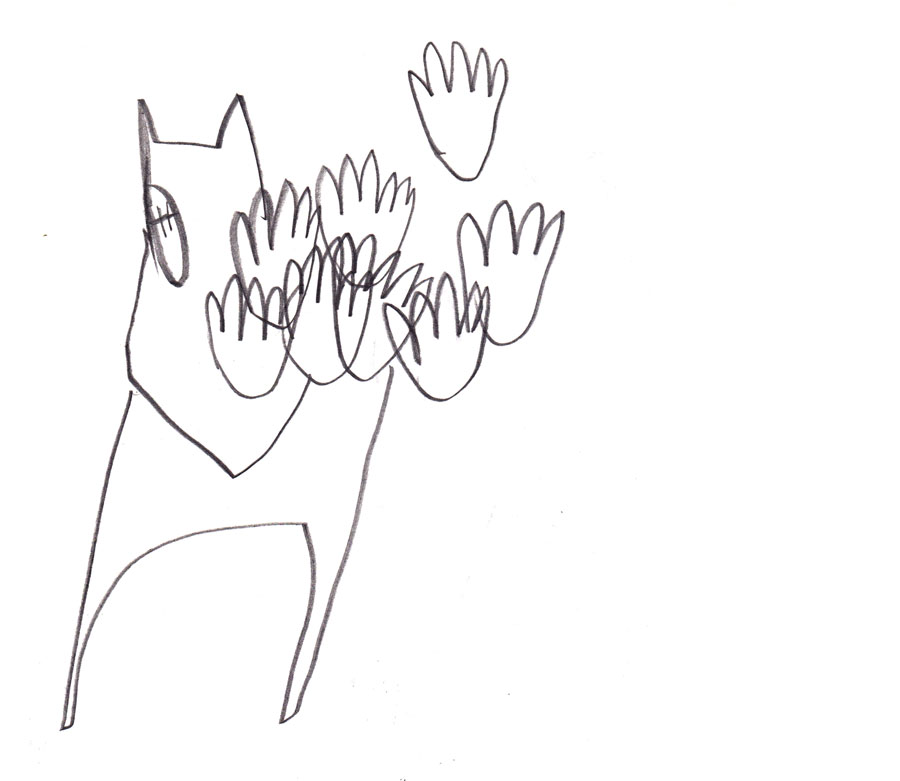
Jesse Darling, Don’t hurt Batman !!!, 2016
La Movida was curated by Sarah Perks. The show remains open at HOME in Manchester until Mon 17 Jul 2017. The guide of the exhibition is available as a PDF.

